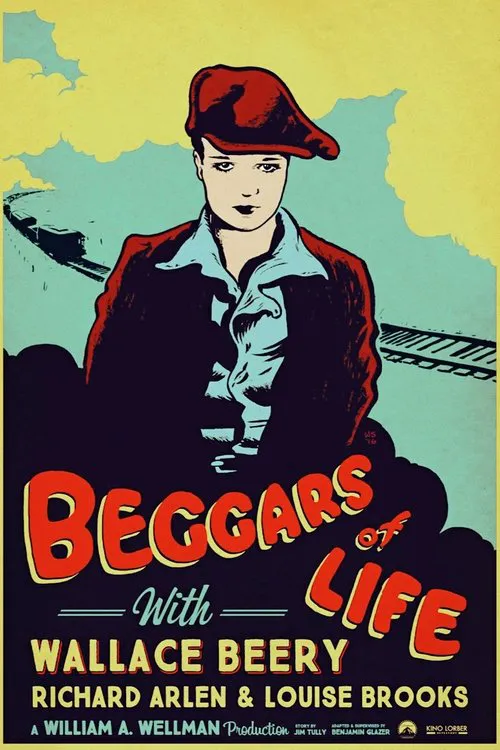Beggars of Life

Plot
Beggars of Life is a 1928 American silent drama film directed by William Wellman, based on the 1924 novel of the same name by Martin Flavin. The film tells the story of a young girl on the run, accompanied by a young vagabond, as they try to evade law enforcement and reach Canada. The story follows the protagonist, a young woman who kills her abusive and treacherous step-father after he tries to sell her to a group of men. Horrified and fearing for her life, she flees her rural home in the United States, determined to reach Canada, which she believes is a free and safe haven. In her desperate bid for freedom, she meets a young vagabond who agrees to help her on her journey. To evade detection, the young woman dresses as a boy, adopting the disguise to avoid being caught by the police or other unwanted individuals who may be searching for her. As they set out, the vagabond, who remains unnamed throughout the film, proves to be a resourceful and clever companion. Through their adventures, the pair develops a strong bond, as they rely on each other for survival. Together, they embark on a perilous journey, utilizing freight trains and makeshift shelters to evade the law and other dangers that lurk in the shadows. Their travels take them across the rural landscape of America, exposing the harsh realities of poverty, crime, and social neglect that existed during the 1920s. The young woman, now posing as a boy, experiences a newfound sense of freedom and camaraderie with her vagabond companion. As they journey north, the pair encounters a group of hobos who are initially hostile towards the young woman, mistaking her for a boy. However, once they discover her true identity, the hobos turn out to be a rough but ultimately benevolent group who take the pair under their wing. The young woman and her companion learn valuable lessons from the hobos, including the importance of resourcefulness and loyalty. As the pair continues on their journey, they decide to steal a car to facilitate their escape. They commandeer the vehicle from a group of wealthy businessmen, leading to a thrilling and suspenseful sequence of events. The young woman and her vagabond companion outwit the police and their pursuers at every turn, using their wit and cunning to stay one step ahead of danger. The film's cinematography and direction are noteworthy for their depiction of the harsh realities of life on the road. The camera captures the desolate landscapes of rural America, highlighting the poverty and social neglect that characterized the 1920s. The film's use of shadows and lighting adds to the sense of tension and suspense, creating a gripping narrative that keeps the viewer engaged. Beggars of Life features a strong female protagonist, ahead of its time in terms of its portrayal of a young woman's empowerment and self-reliance. The film's exploration of themes such as poverty, crime, and social neglect resonated with audiences in the 1920s and continues to be relevant today. Despite being a silent film, Beggars of Life's powerful storytelling and stunning cinematography make it a classic of American cinema that remains a must-see for film enthusiasts and historians alike.
Reviews
Recommendations




